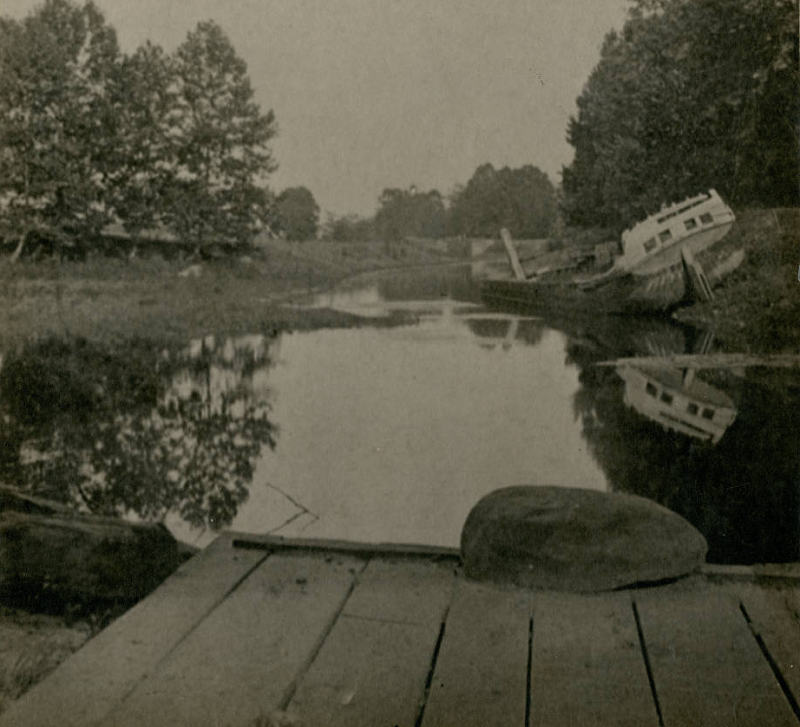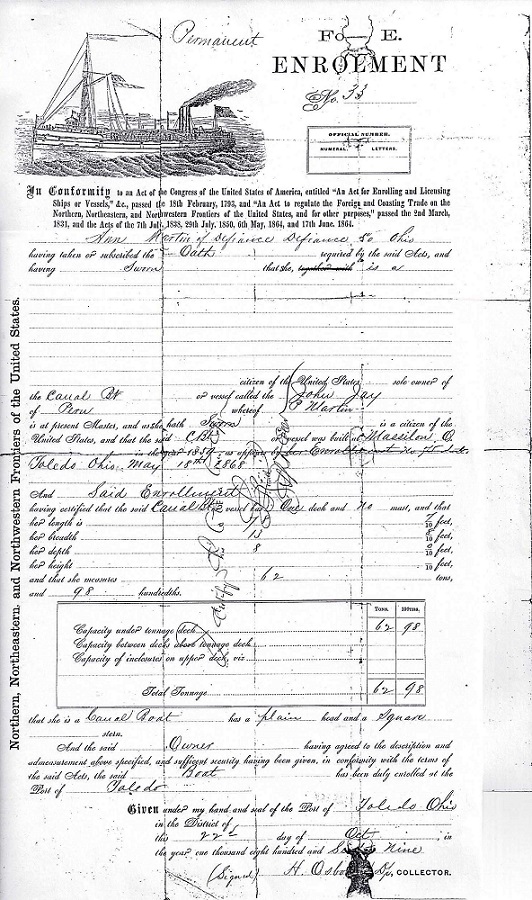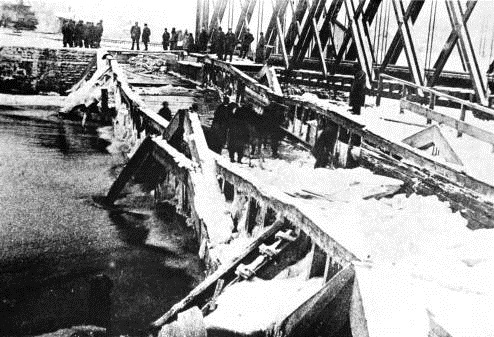
Mary Ann Hassett was born in Ireland’s Tipperary County on May 1, 1842, and at the age of four emigrated to Cincinnati, Ohio. Her husband to be, Patrick Henry Martin, was born in 1840 in Cincinnati and in 1858 the two were joined in marriage at Franklin, Ohio.
After the Civil War broke out Patrick Martin enlisted in the Union army as a private on May 2, 1864, serving with Ohio Company E, 146th Infantry Regiment. He returned to Ohio, where he went canalling between Dayton, Ohio, running on the Miami & Erie Canal to its connection with the Wabash & Erie at Junction, Ohio on the Wabash & Erie. Eventually, he operated two boats, landing at ports between Toledo, Ohio, Lafayette, Indiana, and below.
Canal boat crews were usually described as a five-man team: captain, two steersmen, a driver for the horses or mules and a man or occasionally a woman to do the cooking. Captains were typically men who had to deal with rough and tumble boat hands. Nothing was motorized, including the boat towed by animals, and work on board was done by hand. It meant navigating past oncoming boats and moving through locks, where movement rules were mostly ignored in favor of a boat crew who fought with fists and clubs to determine who got first passage.

After Patrick died in 1871, his wife Mary Ann operated the boats during the last years of the old waterway. In 1874, the courts ordered the canal closed, and by 1876 a group of investors, with rail interests in mind, purchased the route from Lafayette to the Ohio state line. However, before the canal-era ended, Mary Ann was issued a license to operate the canal boat John Jay with its sixty-two plus tonnage rating, its plain head and square stern, measuring seventy-eight feet long and thirteen feet wide on the Wabash & Erie Canal. A rather typical canal vessel, since these long narrow crafts had to be maneuvered into and out of lifting locks, which were constructed on a standard inside measurement of ninety feet long by fifteen feet wide chamber.
Other than having to deal with tough crewmen, Mrs. Martin was responsible for all manner of boat master duties, including the accounting of cargoes and passengers at toll stations in northern Indiana, located at Fort Wayne, Lagro, Logansport and Lafayette.

During those final years, neighbors along the canal had tired of the ditch, blaming the canal for all sorts of issues-real or imagined. Among those accusations were fever emanating from canal water, occasional inadequate water supply, decaying structures, overwhelming debt, crop-field flooding, the inconvenience of roadways interrupted by canal waters, as well as a growing public favor for ever-improving railroad technology.
Unsurprisingly, one night a disgruntled citizen cut a ditch through the canal towpath. That meant the water in the canal channel between the lift locks drained away, putting a stop to navigation. Such vandalism caused Martin to lose her two boats– one at the Carrollton lock near Delphi and another at Logansport. After a career as a canal boat master, Mary Ann Hassett Martin died in September 1914 at the age of seventy-two and was laid to rest beside her husband Patrick in the Catholic Cemetery at Logansport, Indiana.
